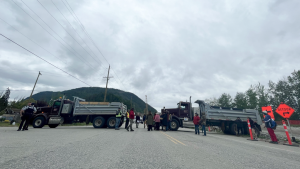Although the chances are slim that a crane or other lifting equipment will fail while it is operating, there is a tiny but ever-present possibility that the force of gravity will leverage normal equipment wear and tear and turn it into a deadly catastrophe.
Such is the reason why the construction industry needs a full complement of experienced crane technicians and engineers. But like many sectors of the industry, there aren’t enough workers to go around, says a Vancouver crane engineer.
Cranes fall into three categories, said Ranislav Trapara, president and chief engineer of WCC Crane Solutions Inc.: Mobile construction cranes, port cranes and overhead, or industrial cranes.
The overhead crane sector in the four western provinces is especially short of technical and engineering expertise.
"The overhead crane industry in Western Canada is small," said Trapara. "I’m the only consulting engineer in B.C. for overhead cranes. There are two in Alberta and none, so far as I know, in Manitoba or Saskatchewan."
Trapara said most members of his small peer group are close to retirement age and there aren’t enough young people entering the industry to succeed them.
"There’s no school anywhere in the world where you can go to learn how to become a crane technician," he said. "The only way is to go to work for a crane company and learn on the job."
There are several different kinds of overhead crane inspections and various standards that apply, depending on the type of crane.
"Most of the time, mandatory periodic inspections are done by certified crane inspectors," said Trapara. "However, very often a professional engineer will be called if additional calculations are required."
A daily inspection is usually performed by crane operators at the start of each shift. They look at the equipment components that are critical to a crane’s safe operation, such as brakes, hooks, hook latch, ropes and limit switch, and check for any evidence of an oil leak.
Periodic inspections need to be undertaken annually, semi-annually or quarterly, depending on a crane’s service class.
Finally, additional inspections, looking for evidence of such failures as overloads, are taken after an incident involving a crane.
Overhead cranes are not the only type of lifting equipment that needs to be inspected.
Klondike Crane Inspection Ltd. inspects a wide range of lofty equipment, including mobile, tower and jib cranes, pipe layers, man-lifts, jacks and derricks.
"The most common things our technicians find in their inspections are small defects," said Meagen LaFave, general manager of this Edmonton family business.
"On their own, most aren’t too serious, but they could lead to a serious accident if not repaired immediately."
Another Edmonton company, Qualimet Inc., inspects and certifies such lifting equipment as cranes, pickers, knuckle booms and telescoping boom frames.
"We perform structural inspections to ensure the integrity of all of the load-bearing components of the crane," said Gary LaFleur, manager of business development and production inspection services.
"According to Alberta regulations, any lifting equipment that lifts over 2,200 kilos must be tested and certified every 12 months."
How long the inspections take, which occur before a crane is erected, depends on the size and complexity of the equipment.
"Generally, it takes from three to eight hours, but sometimes as long as two days," said LaFleur.
The equipment is subjected to visual and non-destructive magnetic particle inspection.
"Any piece of heavy equipment that engages in cyclic loading will develop fatigue cracks in the welds, as well as general wear and tear," said LaFleur.
Mike Kereliuk, Qualimet’s manager of professional practice, said new crane models are stronger than earlier models, but the designs and load-bearing components haven’t changed much.
"What changes more over time are the hydraulics, mechanical components and electronics," explained Kereliuk.
Edmonton-based Cranesmart Systems Inc., which designs and manufactures crane safety systems, has developed a wireless electronic load indication system that most crane users can install themselves.
"All mobile lifting equipment with a lifting capacity of over 3,000 pounds is required to have some kind of load indication system installed that informs the operator of the actual weight on the hook," said Craig Parfitt, Cranesmart sales consultant.
The system can shut down a crane if it senses the equipment is moving out of its safety envelope and prevents it from collapsing.
What makes Cranesmart’s wireless system unique, said Parfitt, is that 90 per cent of its customers can install it themselves in a day.
"All they need is a welder and some basic wiring skills, to power the panel and shut-off valves," he said.











Recent Comments
comments for this post are closed